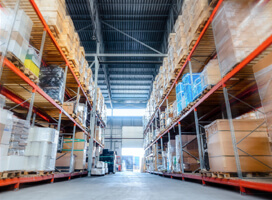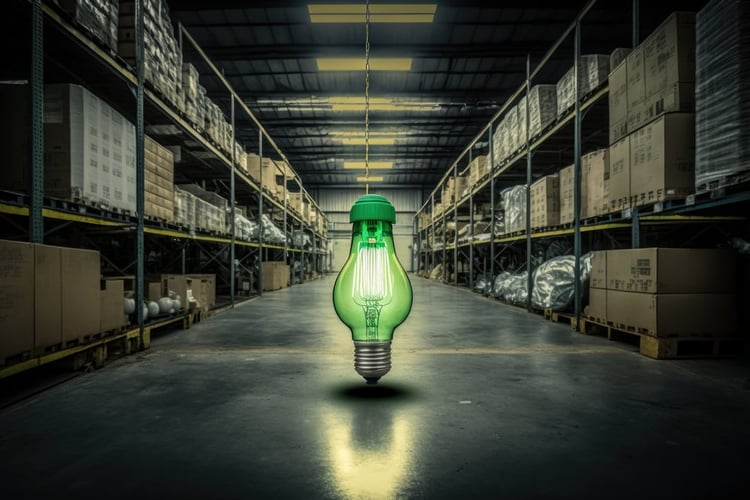
Warehouses and distribution centers have always been focused on efficiency. In many cases, that involves investing in automation solutions that improve order fulfillment times and inventory tracking. Today, a push for more sustainability coupled with rising energy costs and consumer pressures have made energy efficiency a top priority for the warehouse industry.
The U.S. Energy Information Administration (EIA) reports that the commercial sector accounts for about 18% of this country’s energy use. This makes commercial buildings like warehouses an ideal target for green initiatives.
In some areas, sustainability might become a regulatory matter. But there are other reasons to apply green trends to warehousing. A growing number of consumers prefer to give their money to sustainable brands. There may be tax advantages for implementing some initiatives. And incorporating green logistics into your warehouse can also make it more productive, improving your overall results.
Here are some of the top ways you can create a greener warehouse.
1. Start With the Basics
There’s a common misconception that “going green” is costly. In some cases, it can be. But there are plenty of affordable things you can implement to make your warehouse more sustainable and eco-friendly. Some of the basics include:
- Replace your lightbulbs with energy-efficient alternatives
- Implement a facility-wide recycling plan that includes items like glass, paper, and plastics
- Incorporate natural lighting in your facility
- Add some large fans to circulate air and take the stress off the HVAC system
- Use rechargeable batteries instead of disposable ones
2. Adjust Your Warehouse Footprint
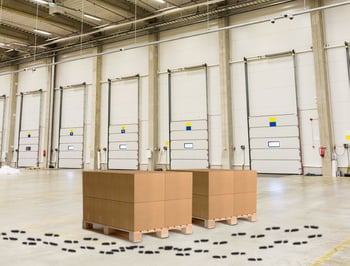 Another way your warehouse can “go green” is to make more efficient use of its space. Instead of expanding your space as your needs grow, consider using your vertical space more effectively. Many warehouses don’t make full use of their shelving and rack systems. When you put in a mezzanine and high bays, you increase your storage capacity and eliminate the need to launch costly and environmentally harmful construction projects.
Another way your warehouse can “go green” is to make more efficient use of its space. Instead of expanding your space as your needs grow, consider using your vertical space more effectively. Many warehouses don’t make full use of their shelving and rack systems. When you put in a mezzanine and high bays, you increase your storage capacity and eliminate the need to launch costly and environmentally harmful construction projects.
3. Prioritize Maintenance
When your systems and machinery are running their best, they tend to be more energy-efficient. Your warehouse is likely losing some efficiency due to a lack of attention to maintenance. A few ways you can improve include:
- HVAC System — Most warehouses are large, open spaces. So they’re costly to keep cool or warm. Have a specialist perform an energy audit and keep your HVAC system well-maintained.
- Energy Efficient Equipment — If your warehouse machinery is out of date, there’s a good chance it isn’t operating efficiently. It also might break down and cost a ton in repairs. Consider purchasing more modern, energy-efficient equipment.
- Service Contracts — Fitting regular maintenance of items like printers, scanners, and wireless terminals into your schedule can be challenging. But, when they fail, it will cost your business valuable time and money. Consider maintenance and support contracts for these items so they will always be in perfect shape.
4. Use Eco-Friendly Packaging
Consumers care more about sustainability than shiny and fancy packaging. Consider switching to recycled materials for your packaging and even storage materials. This can not only reduce your costs but also improve your brand’s reputation.
5. Go Paperless
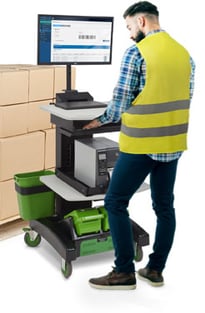 Don’t overlook ways to be more sustainable on the business side of your warehouse operations. Traditionally, a lot of paper gets shuffled around and stored with warehousing and logistics. You’ll be much more efficient, productive, and “green” if you eliminate as much of that paper as possible.
Don’t overlook ways to be more sustainable on the business side of your warehouse operations. Traditionally, a lot of paper gets shuffled around and stored with warehousing and logistics. You’ll be much more efficient, productive, and “green” if you eliminate as much of that paper as possible.
Use a robust warehouse management system (WMS) to manage your operations. Instead of asking employees to run back and forth to a central office for instructions, deploy mobile workstations throughout the warehouse. These moveable carts can hold wireless printers, laptops, and any other technology you need to do your job.
6. Build a Circular Economy
Gone are the days when single-use products are the norm. Sustainability has been a driving force in creating a circular economy where materials get reused and recycled. To reduce the number of disposed of pallets and packages, a warehouse can implement removable labels. Also, streamlining inventory control using a WMS and RFID tags can minimize overstocking and out-of-stock situations. This type of tracking also injects visibility into the supply chain, where partners can track items from raw materials to the recycling stage.
7. Leverage AI and IoT
Artificial Intelligence (AI) and the Internet of Things (IoT) are powerful tools in the warehouse. IoT is an excellent sustainability strategy because it allows for connected devices, such as smart thermostats and lighting, to save energy. At the same time, AI can collect data from your operations and tell your business how it can optimize even the smallest processes so that they are greener and more energy efficient.
8. Install Alternative Energy Solutions
Most warehouses are massive structures. You’d be missing a significant opportunity for energy savings if you didn’t look at your roof and some options for alternative energy solutions. Reflective “cool roofing” materials can reflect heat away from your building and lower your roof’s temperature by 50 degrees or more, according to the Department of Energy.
Skylights can bring natural sunlight into your building, reducing your overall lighting costs. Finally, rooftop solar panels use the sun’s power to generate electricity, with an average ROI of around three to seven years.
9. Employ Warehouse Automation
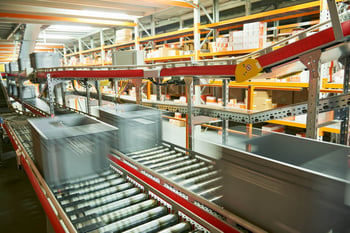 Many traditional methods of inventory control and order fulfillment are inefficient, so they can waste time and money. When you use various automation solutions, you optimize efficiency, which reduces errors and waste.
Many traditional methods of inventory control and order fulfillment are inefficient, so they can waste time and money. When you use various automation solutions, you optimize efficiency, which reduces errors and waste.
You can use automated picking and packing processes to supplement your human labor. These cobots reduce energy consumption by streamlining processes and minimizing travel costs inside the warehouse.
10. Look at Your Landscaping
Last but not least, it might be tempting to ignore the area around the outside of your warehouse. But those grounds can also help with sustainability. When your warehouse is surrounded by asphalt as far as the eye can see, this creates a “heat island,” which can significantly raise the ambient air temperature. Planting trees and other vegetation in these areas can help absorb heat and lower your energy costs.
For many businesses looking to reduce their ecological footprints and improve their bottom line at the same time, it makes sense to consider the concept of green warehousing as part of their overall strategy. Fortunately, there are many things, big and small, your warehouse can implement to improve efficiency and be a greener business.
